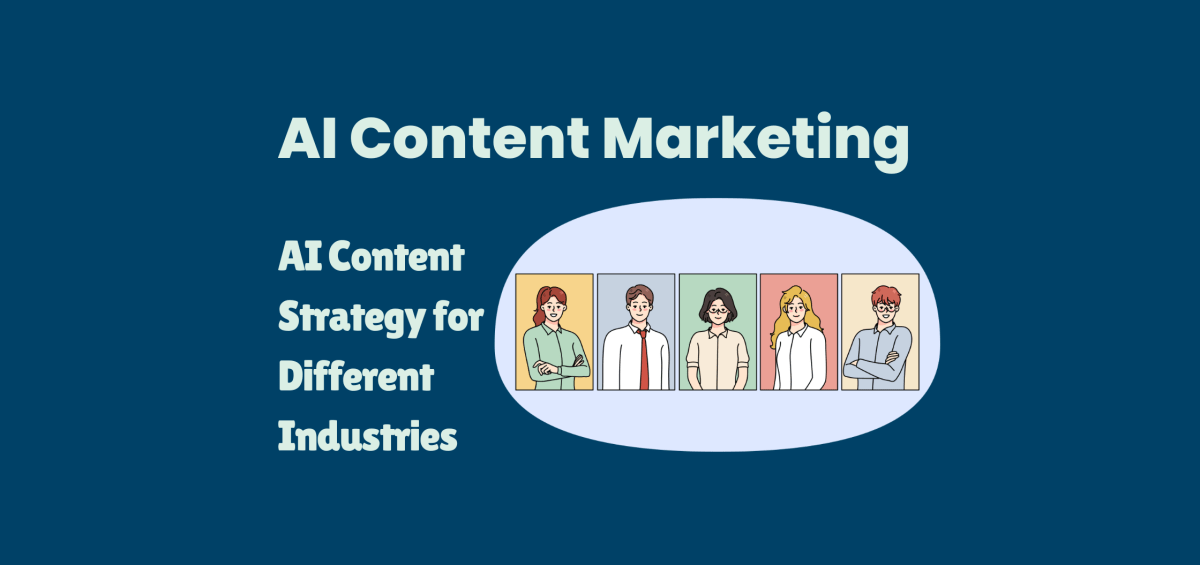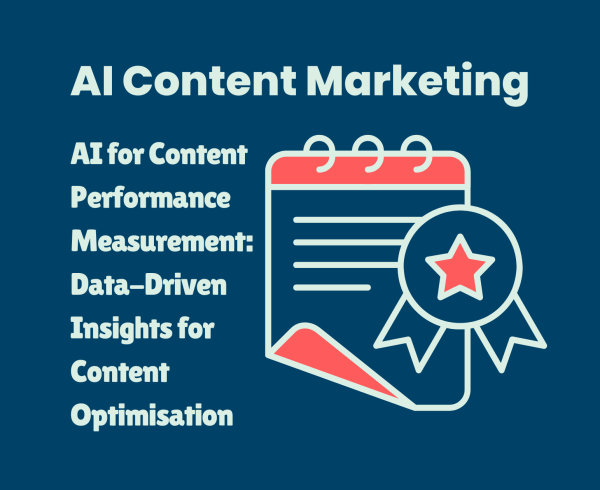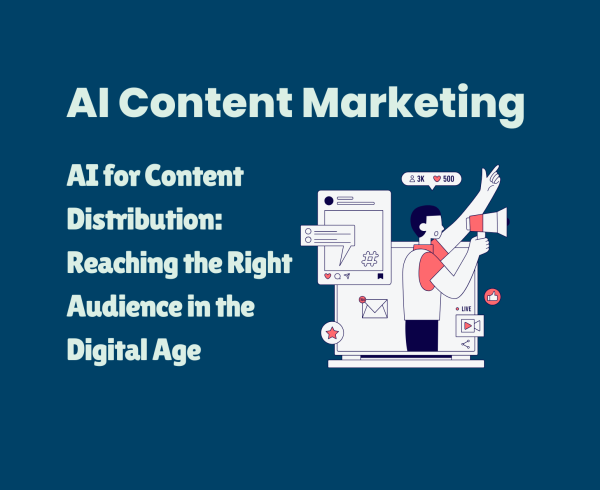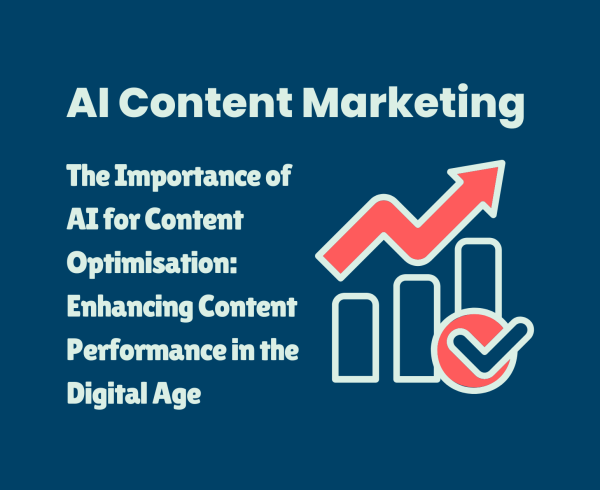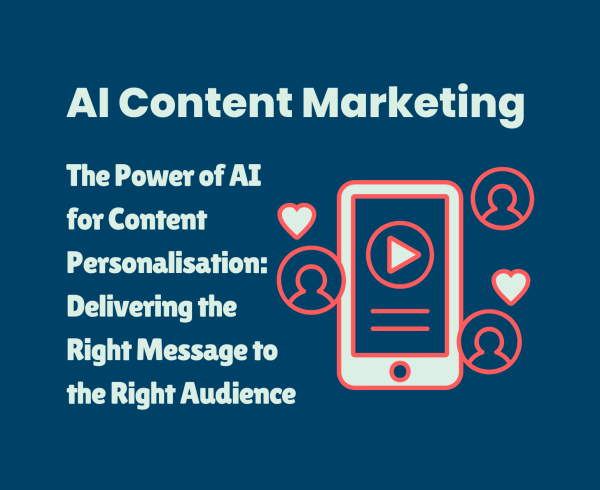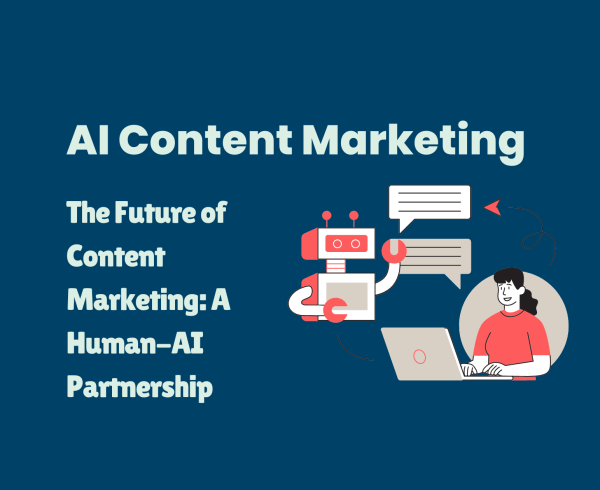While the core principles of content marketing remain consistent, the specific strategies and tactics employed can vary significantly depending on the industry. AI offers a powerful toolkit for tailoring content strategies to the unique needs and challenges of different sectors. Here’s a look at how AI can be leveraged across various industries:
- E-commerce
- Personalization: AI excels at analyzing customer data to deliver highly personalized product recommendations, targeted email campaigns, and dynamic website content. This level of personalization enhances the customer experience and drives conversions.
- Product Information: AI can generate compelling product descriptions at scale, ensuring consistency and accuracy while freeing up human writers for more creative tasks.
- Customer Service: AI-powered chatbots provide instant support, answer questions, and guide customers through their purchase journey, improving satisfaction and efficiency.
- Pricing and Promotions: AI algorithms can analyze market trends, competitor pricing, and customer behavior to optimize pricing strategies and promotional offers, maximizing revenue and profitability.
- Fraud Prevention: AI helps detect and prevent fraudulent activities, such as fake reviews and credit card fraud, protecting businesses and their customers.
Examples: Amazon, Alibaba, Sephora, Walmart, eBay, Shopify.
- Healthcare
- Patient Education: AI can create engaging and informative content that explains complex medical topics in a clear and accessible way, empowering patients to make informed decisions about their health.
- Personalized Communication: AI tailors patient communication, such as appointment reminders, medication reminders, and post-treatment instructions, improving patient engagement and adherence to treatment plans.
- Medical Records: AI can summarize and analyze medical records, making it easier for healthcare professionals to access and share patient information, improving efficiency and reducing errors.
- Drug Discovery and Diagnostics: AI accelerates the development of new treatments and drugs by analyzing vast datasets of medical information. It can also improve the accuracy of diagnostics by analyzing medical images.
- Patient Monitoring and Care: AI-powered tools monitor patient vital signs, provide alerts for potential health issues, and assist healthcare professionals in making treatment decisions, improving patient care and reducing complications.
Examples: Mayo Clinic, Cleveland Clinic, University of Pennsylvania Health System, Pfizer, Aidoc, Philips.
- Finance
- Financial Reporting: AI generates accurate and up-to-date financial reports, helping investors make informed decisions about their portfolios.
- Personalized Investment Advice: AI creates personalized investment recommendations based on individual risk tolerance, financial goals, and market conditions.
- Customer Support: AI-powered chatbots provide 24/7 customer support, answering questions, resolving issues, and providing information about financial products and services.
- Fraud Detection: AI helps detect and prevent financial fraud, such as money laundering and identity theft, protecting financial institutions and their customers.
- Risk Management: AI assesses and manages financial risk by analyzing market data and predicting potential risks, helping institutions make informed decisions.
Examples: Most major banks and investment firms are exploring or implementing AI in these areas.
- Education
- Personalized Learning: AI creates personalized learning plans that cater to individual student needs and learning styles, improving engagement and academic performance.
- Content Creation: AI generates educational content, such as quizzes, flashcards, and study guides, making learning more interactive and engaging.
- Feedback and Assessment: AI provides students with personalized feedback on their work, helping them identify areas for improvement and track their progress.
- Administrative Tasks: AI automates administrative tasks, such as grading and scheduling, freeing up educators to focus on teaching and student interaction.
- Chatbots: AI-powered chatbots provide students with instant support, answering questions and providing information about courses and programs.
Examples: Khan Academy, Duolingo, Coursera, and many universities are using AI in these ways.
- Travel and Hospitality
- Personalized Recommendations: AI analyzes customer data to recommend travel destinations, hotels, and activities that match their interests and travel history.
- Travel Planning: AI generates customized travel itineraries, optimizing for time, budget, and personal preferences.
- Customer Support: AI-powered chatbots provide 24/7 support, answering questions, resolving issues, and providing information about travel destinations and services.
- Dynamic Pricing: AI adjusts pricing for flights and hotels based on demand, availability, and competitor pricing, maximizing revenue for businesses.
- Sentiment Analysis: AI monitors online reviews and social media to understand customer sentiment and identify areas for improvement in services.
Examples: Expedia, Booking.com, Airbnb, TripAdvisor are all using AI to enhance their offerings.
- Manufacturing
- Predictive Maintenance: AI analyzes sensor data to predict equipment failures, preventing costly downtime and improving production efficiency.
- Quality Control: AI-powered image recognition systems detect defects in products, ensuring high quality and reducing waste.
- Supply Chain Optimization: AI optimizes supply chain operations by predicting demand, managing inventory, and streamlining logistics.
- Robotics and Automation: AI powers robots and automation systems, improving efficiency and safety in manufacturing processes.
- Research and Development: AI accelerates the development of new materials and manufacturing processes by analyzing data and simulating different scenarios.
Examples: Siemens, General Electric, Bosch are implementing AI in their manufacturing processes.
- Retail
- Personalized Shopping Experiences: AI powers personalized recommendations, targeted promotions, and customized shopping journeys, enhancing the customer experience.
- Inventory Management: AI predicts demand, optimizes inventory levels, and prevents stockouts, ensuring products are available when customers need them.
- Customer Service: AI-powered chatbots provide instant support, answer questions, and resolve issues, improving customer satisfaction.
- Loss Prevention: AI helps detect and prevent shoplifting and other forms of loss, protecting retail businesses from financial losses.
- Store Layout and Design: AI analyzes customer traffic patterns and behavior to optimize store layout and design, improving the shopping experience and increasing sales.
Examples: Target, Walmart, Lowe’s, and many other retailers are using AI in these ways.
- Nonprofits
- Fundraising: AI identifies potential donors, personalizes fundraising appeals, and predicts donation patterns, increasing fundraising effectiveness.
- Volunteer Management: AI matches volunteers with suitable opportunities, manages volunteer schedules, and tracks volunteer contributions.
- Program Optimization: AI analyzes program data to identify areas for improvement and measure the impact of programs on beneficiaries.
- Social Media: AI helps manage social media accounts, engage with followers, and spread awareness about the nonprofit’s mission and activities.
- Grant Writing: AI assists with grant writing by identifying relevant funding opportunities and generating compelling grant proposals.
Examples: The American Red Cross, Charity: Water, and many other nonprofits are exploring AI applications.
- Government
- Citizen Services: AI-powered chatbots provide 24/7 support, answer questions, and guide citizens through government processes, improving efficiency and accessibility.
- Fraud Detection: AI helps detect and prevent fraud in government programs, such as tax fraud and welfare fraud, protecting taxpayer money.
- Public Safety: AI analyzes crime data to predict crime hotspots, optimize police patrols, and improve public safety.
- Traffic Management: AI optimizes traffic flow, reduces congestion, and improves transportation efficiency.
- Environmental Monitoring: AI analyzes environmental data to monitor pollution levels, predict natural disasters, and protect the environment.
Examples: Many government agencies at the local, regional, and national levels are exploring AI applications.
Conclusion:
AI is transforming content marketing across industries, providing businesses with the tools and insights to create more personalized, engaging, and effective content experiences. By understanding the unique needs and challenges of their industry, marketers can leverage AI to achieve their content marketing goals and drive business success.

